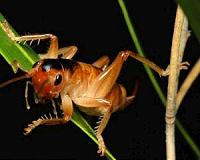| . |  |
. |
Washington DC (SPX) May 26, 2011 Species pairs that disappear through hybridization after human-induced changes to the environment can reemerge if the disturbance is removed, according to a new mathematical model that shows the conditions under which reemergence might happen. The findings, published in the journal Evolution, are important for conservationists and ecosystem managers interested in preserving, or even restoring, systems that have been disturbed by human activity. By simulating environmental disturbances that reduce the ability of individuals to identify and select mates from their own species, the model explores the mechanisms that cause hybridization between closely-related species. Hybridization can lead to population decline and the loss of biodiversity. For instance, certain species of stickleback fish have collapsed into hybrid swarms as water clarity in their native lakes has changed, and certain species of tree frogs have collapsed as vegetation has been removed around their shared breeding ponds. Such hybrid swarms can replace the original species. "What is happening isn't just speciation in reverse. The model shows that populations after collapse are likely to be different from the parental populations in ways that affect the future evolution of the system," said Tucker Gilman, postdoctoral fellow at the National Institute for Mathematical and Biological Synthesis and the paper's lead author. According to the model, the reemergence of species pairs was more likely when disturbances were strong than when they were weak, and most likely when disturbances were quickly corrected. However, even temporary bouts of hybridization often led to substantial homogenization of species pairs. This suggests that ecosystem managers may be able to refill ecological niches, but probably won't be able to resurrect lost species after species collapse. "The encouraging news from an ecosystems service point of view is that, if we act quickly, we may be able to refill ecological niches emptied by species collapse. However, even if we can refill the niches, we probably won't be able to bring back the same species that we lost," Gilman said. Citation: Gilman RT, Behm JE. 2011. Hybridization, species collapse, and species reemergence after disturbance to premating mechanisms of reproductive isolation. Evolution. Article first published online: 29 APR 2011. DOI: 10.1111/j.1558-5646.2011.01320.x
Share This Article With Planet Earth
Related Links National Institute for Mathematical and Biological Synthesis (NIMBioS) Darwin Today At TerraDaily.com
 Scientists list top 10 new species in 2010
Scientists list top 10 new species in 2010Tempe AZ (SPX) May 25, 2011 The International Institute for Species Exploration at Arizona State University and a committee of taxonomists from around the world - scientists responsible for species exploration and classification - announced their picks for the top 10 new species described in 2010. The 23 announcement coincided with the anniversary of the birth of Carolus Linnaeus, the Swedish botanist who was respons ... read more |
|
| The content herein, unless otherwise known to be public domain, are Copyright 1995-2010 - SpaceDaily. AFP and UPI Wire Stories are copyright Agence France-Presse and United Press International. ESA Portal Reports are copyright European Space Agency. All NASA sourced material is public domain. Additional copyrights may apply in whole or part to other bona fide parties. Advertising does not imply endorsement,agreement or approval of any opinions, statements or information provided by SpaceDaily on any Web page published or hosted by SpaceDaily. Privacy Statement |